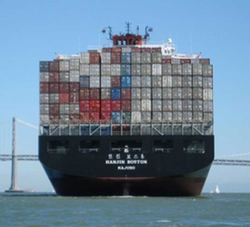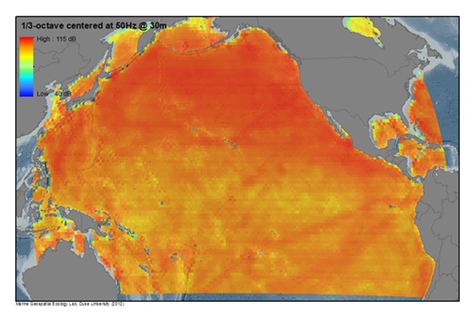IMO adopts shipping noise guidelines, adding to ISO measurement standards
Effects of Noise on Wildlife, Ocean, Shipping Comments Off on IMO adopts shipping noise guidelines, adding to ISO measurement standardsThe International Maritime Organization (IMO) has adopted the first-ever comprehensive guidelines on shipping noise. The voluntary guidelines mark the first step toward a longer-term goal of bringing noise factors into planning for both ship design and shipping routes.
 This marks the successful completion of a six-year process, largely spearheaded by NOAA, the US Coast Guard, and their German counterparts at IMO. The US Chamber of Shipping, a trade organization, has also been engaged from the start. While the guidelines are voluntary, leading some observers to question their value, it is expected that many key players will begin to work with the guidelines in coming years. In general, the shipping industry is far more willing to design new ships to be quieter, than to retrofit older ships. Ed. note: one fascinating insight from the early IMO process was that global shipping noise may be dominated by relatively few unusually loud ships in each size class.
This marks the successful completion of a six-year process, largely spearheaded by NOAA, the US Coast Guard, and their German counterparts at IMO. The US Chamber of Shipping, a trade organization, has also been engaged from the start. While the guidelines are voluntary, leading some observers to question their value, it is expected that many key players will begin to work with the guidelines in coming years. In general, the shipping industry is far more willing to design new ships to be quieter, than to retrofit older ships. Ed. note: one fascinating insight from the early IMO process was that global shipping noise may be dominated by relatively few unusually loud ships in each size class.

In this ocean noise map created by NOAA, the darkest areas represent noise about 60dB above natural ambient levels
As summarized by NRDC, the new guidelines mark a milestone in ocean noise awareness on several fronts, as they:
- recognize that shipping noise can have short-term and long-term impacts on marine life, especially on marine mammals;
- call for measurement of shipping noise according to objective, available international standards;
- identify computational models for determining effective quieting measures;
- provide guidance for designing quieter ships and for reducing noise from existing ships, especially by minimizing the roar produced by ship propellers, in a process known as cavitation; and
- advise owners and operators on how to minimize noise through ship operations and maintenance, such as by polishing ship propellers to remove fouling and surface roughness.
UPDATE, 6/4/14: In 2012, the International Organization for Standardization (ISO) developed formal standards for the measurement of underwater sound from ships. ISO standards provide detailed specifications that assure consistency in what is being measured (frequencies, reporting metrics), and how (distance from sound source, conditions, etc.). Combined with the IMO guidelines, shipping companies now have the tools they need to provide clear information on the noise footprint of their vessels and the design choices they make to reduce noise; although neither the IMO nor ISO specify specific limits or targets for ship noise, they provide standardized ways of reporting on the noise of ships. RINA Services, which provides a wide range of independent marine certifications, has just added a new voluntary notation, DOLPHIN, that combines the IMO and ISO reporting standards, and gives shipowners a third-party certification option to specify commercial vessels which have implemented solutions to minimize radiated underwater noise.

